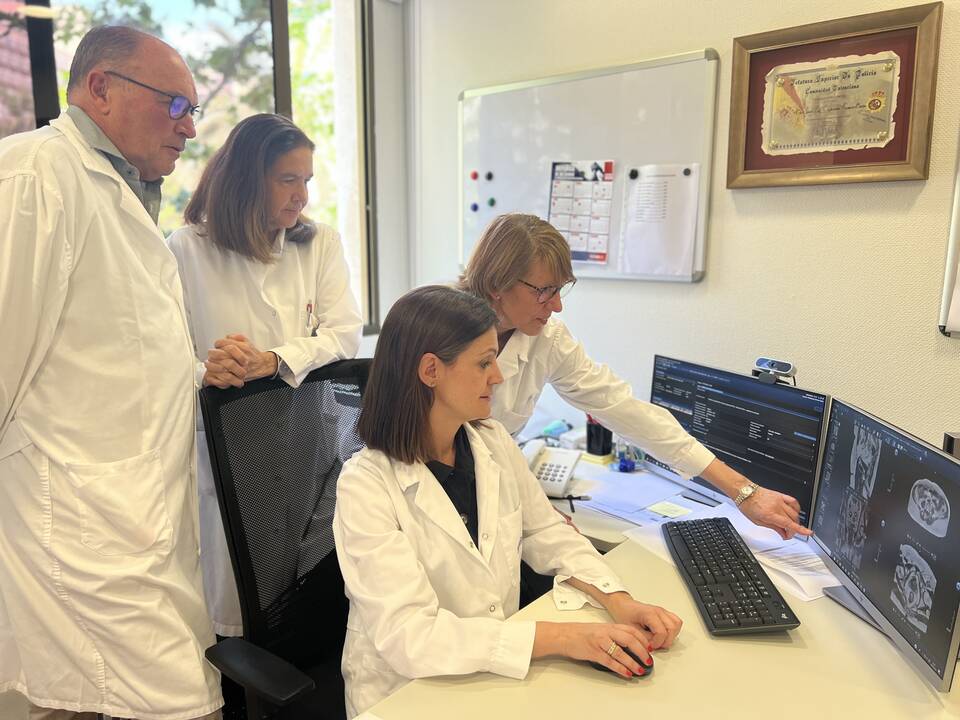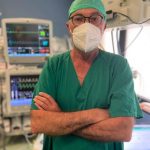



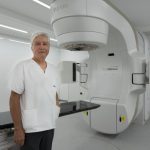
This June 11 marks World Prostate Cancer Day, a disease that has a slow process and may not be perceived by the patient in the initial phases.
For this reason, specialist doctors recommend going to the urologist and having check-ups starting at the age of 45 and, if there is a family history, starting at the age of 40. According to the Spanish Society of Medical Oncology (SEOM), it is expected that in 2024 the The most common tumors are those of the colon and rectumwith 44,294 new cases, followed by mom’s (36,395), lung (32,768), prostate (30,316) and urinary bladder (22,097). These are figures that maintain prostate cancer as the cancer with the highest incidence in men in Spain for another year.
Despite the increase in cases of prostate cancer in recent decades, the progress in screening programs, new therapies and drugs, and innovative diagnostic techniques have made it possible to “practically make prostate cancer chronic”placing its cure rate “around 90-94%”, as explained by Dr. Juan Casanovahead of the Urology Service of the Valencian Institute of Oncology Foundation (IVO).
The challenge of diagnosing a tumor before it develops
One of the main challenges in the diagnosis of prostate cancer is its detection in early stages, recalls Dr. Casanova. “Typical urinary symptoms, such as nocturia, a sensation of urinary urgency, frequency and incomplete emptying, are non-specific and are not linked to prostate cancer, but rather to prostatic hyperplasia or enlargement that all adult men suffer from.” The expert also remembers that prostate-specific antigen or PSA, “is a non-specific marker, and not all patients with an elevation of this marker suffer from prostate cancer.”
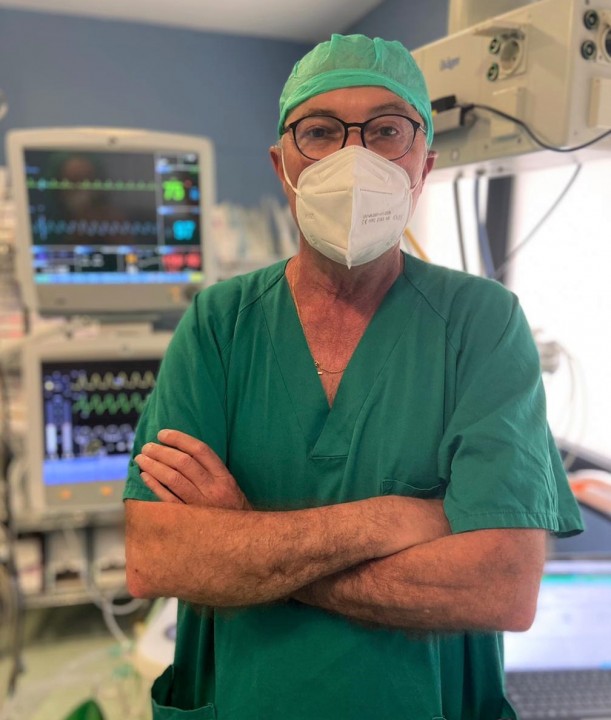
Juan Casanova, head of the Urology Service of the Valencian Institute of Oncology Foundation
This is where magnetic resonance imaging (MRI) plays a fundamental role, as highlighted by Dr. Paula Pelechano, Associate Physician of the IVO Radiodiagnosis Service. MRI, by establishing a category of suspicion (PI-RADS), allows the biopsy to be directed towards suspicious lesions, avoiding unnecessary biopsies and improving diagnostic yield.
To diagnose this type of tumor in incipient stages, in Spain there are early detection programs aimed at men aged 45 and over. As Dr. Casanova points out, the test allows for differentiated follow-up by risk groups and consists of a simple examination such as a digital rectal examination and a conventional blood test to detect the PSA level. “This is a test comparable to those carried out for the early detection of breast cancer in women, which is increasingly adhered to among men.” And he remembers the importance of visiting the urologist once a year “for the interpretation of any symptoms and signs in an adequate and precise way.”
Dr. Casanova also highlights that advances in imaging tests such as MRI and PET, combined with PSA, “allow a more precise diagnosis of cancer and avoid many unnecessary biopsies.” He highlights that The IVO has an Opportunistic Early Diagnosis program for Prostate Cancer through a rectal examination and a blood test to determine the PSA. “In the event of a suspicious examination and two PSAs above 4 ng/ml, an MRI is performed and addressed by a Uro-Radiological Committee where the need for a biopsy is outlined and, if performed, whether it is with fusion.”
In this sense, the head of the IVO Urology Service recalls that fusion biopsy, a procedure to obtain a biopsy that combines magnetic resonance imaging and ultrasound to create detailed three-dimensional images of the prostate, has been one of the main “ “milestones” in the diagnosis of prostate cancer. “Currently, we are able to ‘navigate’ the prostate and sample suspicious areas based on MRI. Not only do we diagnose earlier, but we also characterize the tumor better and we can more precisely adjust the appropriate therapeutic option,” says the expert.
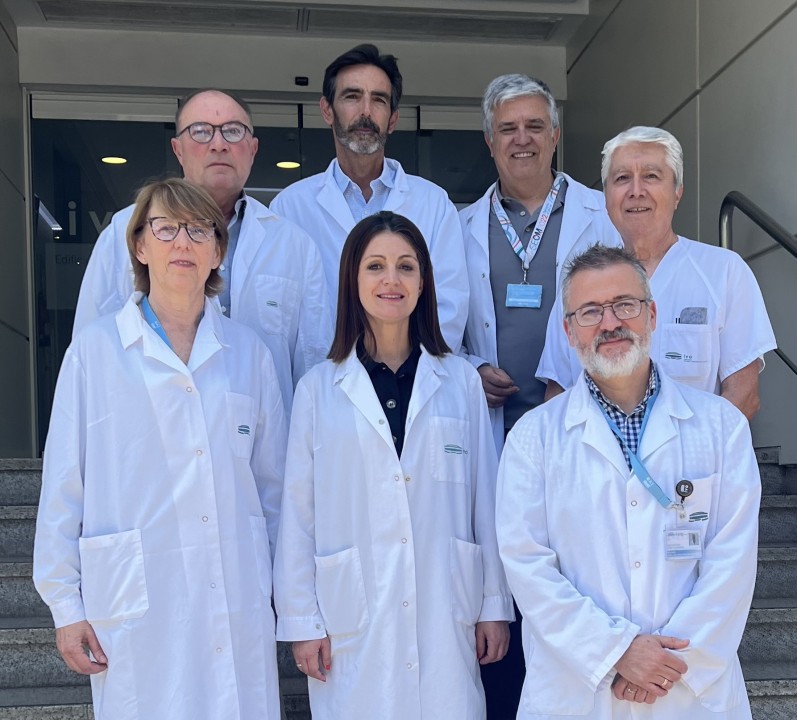
Dr. Calatrava, Dr. Pelechano, Jose Antonio Lopez Guerrero, Dr. Casanova, Dr. Gómez Ferrer, Dr. Climent and Dr. Arribas.
In the words of Dr. Ana Calatravahead of the Pathological Anatomy Service of the IVO, biopsy is essential to confirm the existence of cancer and determine its histological characteristics. “The joint assessment of the biopsy and the MRI allows us to choose the most appropriate therapeutic option for each patient and at each stage of the disease.” Currently, there are clinical trials that explore the possibility of confirming the existence of cancer immediately using confocal microscopy. , allowing treatment in the same surgical procedure as diagnosis.
Risk factor’s
The majority of the more than 30,000 new cases of prostate cancer that will be detected this year will be diagnosed in elderly men, with 90% of patients over 65 years of age and an average age of diagnosis of 75 years.
As explained by Dr. Jose Antonio Lopez Guerrero, head of the Molecular Biology Service of the IVO, in a way there is a certain genetic predisposition to developing this type of cancer, but not all cases have hereditary origin. “There are two scenarios at the family level that increase the risk of suffering from prostate cancer: the one that occurs in the context of a family in which there is a certain aggregation of cases, which is called familial prostate cancer and occurs in approximately 20% of cases; and on the other hand, we would have hereditary prostate cancer, which is less common and is responsible for approximately 5% of diagnosed prostate cancer cases.” And he clarifies: “Compared to sporadic cases, hereditary prostate cancer is characterized by an early onset, a more aggressive behavior of the cancer with a greater risk of relapse after surgery.”
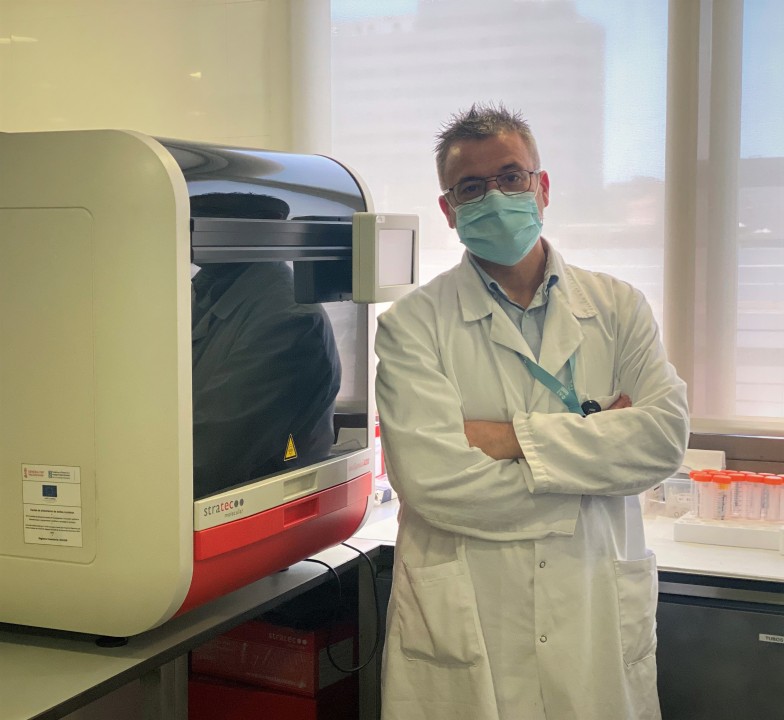
José Antonio López Guerrero, Head of the IVO Molecular Biology laboratory service
The importance of a comprehensive and multidisciplinary approach
As pointed out by Dr. Miguel Ángel Climent, clinical head of the IVO Medical Oncology service, once the diagnosis of prostate cancer is confirmed, “the first step is to determine if the cancer is localized.” For this, they use extensive diagnostic tests such as CT, bone scanning and PET.
In cases where the tumor is located in the prostate, there are numerous treatment options, ranging from Active Surveillance and focal therapy (treatment aimed exclusively at the intraprostatic tumor) to more radical treatments such as surgery or radiotherapy. The choice of treatment depends on the characteristics of the patient, such as his age and other diseases he may have, as well as the size and location of the tumor.”

Dr. Miguel Ángel Climent, Clinical Head of the IVO Medical Oncology Service
In it case of tumors with metastasis, Dr. Climent emphasizes that the fundamental treatment remains anti-androgenic hormonal therapies (treatments that block the action of androgens, male hormones). For this type of case, there are also treatments with chemotherapy, radioactive isotopes such as Ra223, radioconjugates such as Lutetium-PSMA, or treatments that act when there is the presence of certain genetic alterations in the tumor. “All of these treatments have shown promising results, although we are still determining in which clinical situations they obtain the best results,” and adds: “Each patient is unique, and our goal is to offer them the most appropriate treatment based on their characteristics and their specific situation. disease”.
Radiotherapy in the treatment of prostate cancer: effectiveness and applications in different stages
What role does radiation therapy play in the treatment of prostate cancer? As explained by Dr. Leoncio Arribas, head of the IVO Radiation Oncology Service, radiotherapy “is very effective” in most stages of the disease. In this way, in initial low-risk phases, “Brachytherapy is an alternative to surgery, with results in the 10-year IVO experience above 90%.”
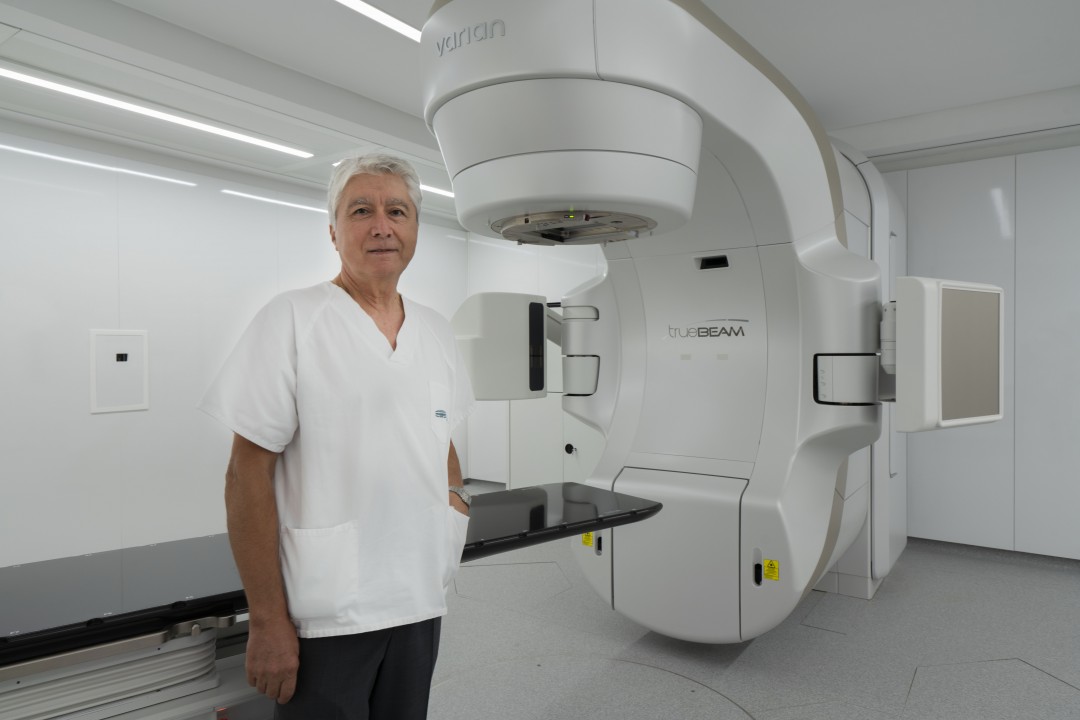
Dr. Leoncio Arribas, head of the IVO Radiation Oncology Service
In relation to the intermediate risk stages, Dr. Arribas explains that both Brachytherapy and external radiotherapy, alone or combined with each other, or with hormone therapy, continue to constitute the best therapeutic options. For locally advanced cases, the expert highlights the results of combining radiotherapy with hormone therapy. Likewise, Dr. Arribas recalls the role that radiotherapy plays in the treatment of pain caused by bone or brain metastases, etc. “The IVO has extensive experience that allows it to offer each patient the radiotherapy treatment that best suits their needs, both in terms of external radiotherapy and brachytherapy,” highlights the doctor.
The benefits of robotic surgery for the treatment of prostate cancer
Robotic surgery constitutes one of the greatest advances for the radical surgical treatment of prostate cancer. In this sense, Dr. Alvaro Gomez-Ferrerclinical head of the IVO Urology Service, highlights “the reduction of pain in the postoperative phase and, in general, a faster functional recovery with shorter hospital stays,” among the main advantages it offers to the patient.
For the surgeon, it provides “surgical precision, increased 3D vision, and improved ergonomics,” which improves the functional results of prostatectomy and minimizes surgical complications, offering excellent oncological results.
Advances and research:
Between the advances in treatment, experts pin their hopes on immunotherapy: “We still do not have important results that allow the generalization of these treatments in this cancer, but there are many clinical trials underway that are expected to have good results and we can have new treatment alternatives for these patients,” explains the doctor. Climent.
Likewise, the clinical head of the IVO Medical Oncology service highlights the importance of taking into account the symptoms reported by the patient, the PSA number obtained in a blood test and the degree of histological aggressiveness of the tumor obtained in the biopsy. And he adds: “In recent years, new, more sensitive diagnostic tests have been developed to detect the possible locations of metastases, such as PET choline or PET PSMA, which have indications depending on the situation of the disease.”

